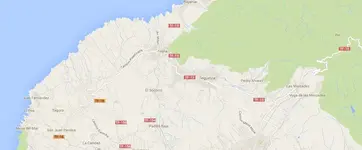You can't have it both ways, Oro. If you admit these stories may have some important messages in them, but are factually inaccurate/unverifiable, then, fine - put them in the 'rumors/hearsay' pile, but don't try to use them to support your rational arguments. However, if you can demonstrate these types of stories' veracity, then by all means, include them as 'proof'.
You are clearly mistaken here.
Newspaper articles are news reports - they often have errors in them, even factual errors,
which does not make the WHOLE article false. I have posted an example several times before, in which a man died in a car accident and the newspaper transposed the distance the car was carried by the river before stopping, to the height of the embankment; however the rest of the facts in the article were correct. A reporter obtains his information usually by interviewing people, and in the early days before tape recorders, simply took notes. They then wrote up the article and an editor then worked it over before it was printed -
allowing several layers of errors to creep in, and yet the basic points of the news article are completely sound. You are certainly free and welcome to put anything and everything into the "rumors/hearsay" pile and I wish you the best of luck, however your reasoning does not make sense to me. So I must remain (
respectfully) in disagreement about newspaper articles as evidence.
I think our mutual amigo Gollum put it very well - we have legends/stories, with only scant documentation to provide solid proof. We can try to sift out the chaff and press on in the search, OR to simply refuse to accept ALL evidence and you may as well stay home and find a different hobby than treasure hunting for the vast majority of treasure hunting is exactly this kind of case, you have stories, rumors, hearsay, a few pieces of documents that may or may not support it, and you either get out and hunt based on your best evidence and interpretations, or find another hobby as you are set for disappointment if you expect to see sworn affidavits, assay reports, claim documents, photos and the like.
There are a few exceptions to what I just wrote, like the lost silver mine which is now known as the Silver King, or the Mojave mine, or Goler's gold, mines which were lost and only rumors/hearsay with little solid evidence but are now found, and a few examples which are very well documented like the lost Topaz mine of Devil's Head (Colorado) and yet remains lost. Would you like to claim that the newspaper articles about these examples, are just rumor/hearsay? Would you admit that an article on one of these, might have a few errors in it, and yet remain basically correct?
UncleMatt wrote
I am curious, do any of you have any data on whether or not the Jesuits knew about telluride ores? I posted a question about this related to the Spanish in a separate thread, but also wanted to ask about the Jesuits, and whether or not they knew of tellurides, and how to process them.
I sure do not know the answer to that one - the basic 'bible' on mining tech of the Jesuits day was the book by Agricola, and I don't think that book covers tellurides, in fact I think tellurides were not recognized until the mid-1800s but could be wrong. Sorry I can't help on that one.
Good luck and good hunting amigos, I hope you find the treasures that you seek.
Oroblanco








